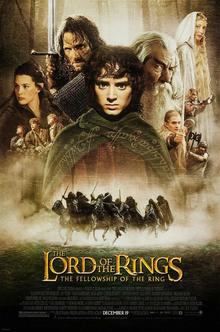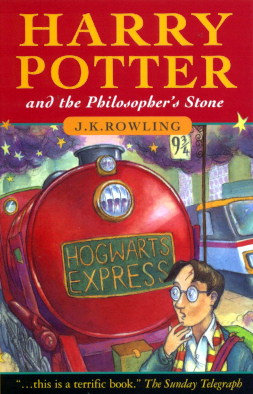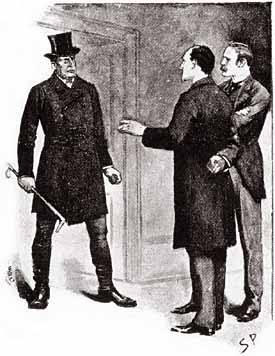Better English Compositions in O Level English: What is the Story Mountain and what is it for?
Learning how to write better English compositions – especially at the secondary school level – can be challenging, as writing stories in itself is a craft. (I would know. I myself am stuck in the process of writing my own novel.) In the O Level English Language Paper 1, students are indeed given an option to write a narrative composition. In this article, we are fleshing out the 5 components within the Story Mountain to provide some tips and insights into the method to write better English compositions.
In short, the story mountain is a visual representation of a typical story in terms of its intensity. To put it in science-speak, it is essentially a curve, where the x-axis represents the progression of the story while the y-axis represents the level of intensity.
A typical story would have 5 elements: the Introduction, the Build-Up, the Climax, the Resolution and the Ending. Charting the intensity levels on the curve would result in an askew bell-shaped curve which resembles a mountain. As such, this is how it earns its nickname, as seen below.

The main purpose of the Story Mountain, in short, is to provide a structure for students to write their stories. As such, students can then maintain the coherence of the plots and write a story with a logical progression of events with some sort of resolution or catharsis at the end and character development.
Better English Compositions: The Introduction of the Story Mountain
The introduction of English compositions is where students need to establish the characters and the plot of the story. At the same time, they need to do it in a compelling manner that immediately captures the readers’ attention. Doing so would mean using a good hook.
Writing a good hook can be done in a few ways: one can either use the Show, Don’t Tell technique to hint at the main character’s personality traits, or describe the setting using Personification or Metaphors to set the tone of the story, or bring in a famous quote that may be pertinent to the story.
Most importantly, no matter what techniques are used, it is highly recommended that the hook is written with the motivation of establishing the setting and characters. Such techniques are present in almost all media that tell stories.

For instance, in the Lord of the Rings: The Fellowship of the Ring, the opening scene of the book saw the description of Mr Bilbo Baggins of the Shire.
[su_quote]
When Mr. Bilbo Baggins of Bag End announced that he would shortly be celebrating his eleventy-first birthday with a party of special magnificence, there was much talk and excitement in Hobbiton.
Bilbo was very rich and very peculiar, and had been the wonder of the Shire for sixty years, ever since his remarkable disappearance and unexpected return. The riches he had brought back from his travels had now become a local legend, and it was popularly believed, whatever the old folk might say, that the Hill at Bag End was full of tunnels stuffed with treasure. And if that was not enough for fame, there was also his prolonged vigour to marvel at. Time wore on, but it seemed to have little effect on Mr. Baggins. At ninety he was much the same as at fifty. At ninety-nine they began to call him well-preserved; but unchanged would have been nearer the mark. There were some that shook their heads and thought this was too much of a good thing; it seemed unfair that anyone should possess (apparently) perpetual youth as well as (reputedly) inexhaustible wealth.
‘It will have to be paid for,’ they said. ‘It isn’t natural, and trouble will come of it!’
[/su_quote]
(Cited from Tolkien, J.R.R. The Lord of the Rings: The Fellowship of the Ring. HarperCollins Publishers: London, 2008. Google Play Books.)
In this one paragraph, we learn that:
1. Bilbo was a rich Hobbit (“Bilbo was very rich and very peculiar”);
2. The physiology of Hobbits is somewhat similar to that of Mankind in real-life, at least in terms of age (“At ninety-nine they began to call him well-preserved; but unchanged would have been nearer the mark.”);
3. There is some magic at work here that made Bilbo look the same and not age for 40 years (same quote as number 2);
4. Hobbits, as a species, had a natural wisdom about them (” ‘It will have to be paid for,’ they said. ‘It isn’t natural, and trouble will come of it!’ “)
The story is thus set, along with the presumed important character(s), keeping our attention and our eyes riveted to the novel. (Well. It’s all subjective. Personally, I really, really, REALLY love Tolkien’s epics.)
Better English Compositions: The Build-up of the Story Mountain
The build-up in English compositions begins when a character takes action that sets the course of the story itself, or when something occurs to the character in order to force the character to take action. This is also known as the Inciting Incident.
This portion of the Story Mountain should form the bulk of a student’s writing, as it should describe the actions that the various characters take and the changes that occur plot. In short, this should be the place where students pull out the stops to deepen their descriptions.
Yet, knowing when to describe can indeed be tricky. The general rule-of-thumb is that the descriptions should be deepened for significant plot points or character changes.
In Harry Potter and the Philosopher’s Stone, the inciting incident was when Hagrid visited the Dursleys’ and told Harry about his true lineage and nature, establishing the new world in which the author was taking readers.

[su_quote] “There was silence in the hut. Only the sea and the whistling wind could be heard.
‘I’m a what?’ gasped Harry.
‘A wizard, o’ course,’ said Hagrid, sitting back down on the sofa, which groaned and sank even lower.
…
Harry stretched out his hand at last to take the yellowish envelope, addressed in emerald green to Mr. H Potter, The Floor, Hut-On-The-Rock, The Sea. He pulled out the letter and read:
HOGWARTS SCHOOL OF WITCHCRAFT AND WIZARDRY.
[/su_quote]
(Cited from Rowling, J.K. Harry Potter and the Philosopher’s Stone. Bloomsbury Publishing Plc: London and Ireland, 2014.)
The following chapters would see more descriptions as Harry Potter becomes acquainted with the wizarding world in which he will be residing in the next phase of his life, at least until they learn more about the Philosopher’s Stone.
In the chapters leading to the Gringotts Bank’s robbery report, Rowling took the time to introduce and establish the relationships that would anchor Harry Potter’s journey for the following novels up to Deathly Hallows, such as the crucial relationship that Harry, Ron and Hermione share, on top of the antagonistic relationship that Harry would come to share with Snape and Malfoy.
Better English Compositions: The Climax of the Story Mountain
The climax is where the most intense action of the story occurs. For example, in Avengers Endgame, the climax is the battle between the Avengers and Thanos. In The Godfather, the climax is the scene where Michael Corleone becomes godfather to his nephew.
In novels, the climax can certainly be stretched out into a few chapters, but given the context of the O Level English paper, English compositions do not be too long. Nevertheless, the climax is the second point in the Story Mountain where the bulk of the description should occur; or rather, it should be where the descriptions be as colourful as possible.
This applies to short stories as well. For instance, consider Sir Arthur Conan Doyle’s Sherlock Holmes: The Adventure of the Speckled Band below:

[su_quote]
Suddenly there was the momentary gleam of a light up in the direction of the ventilator, which vanished immediately, but was succeeded by a strong smell of burning oil and heated metal. Someone in the next room had lit a dark-lantern. I heard a gentle sound of movement, and then all was silent once more, though the smell grew stronger. For half an hour I sat with straining ears. Then suddenly another sound became audible—a very gentle, soothing sound, like that of a small jet of steam escaping continually from a kettle. The instant that we heard it. Holmes sprang from the bed, struck a match, and lashed furiously with his cane at the bell-pull.
“You see it, Watson?” he yelled. “You see it?”
But I saw nothing. At the moment when Holmes struck the light I heard a low, clear whistle, but the sudden glare flashing into my weary eyes made it impossible for me to tell what it was at which my friend lashed so savagely. I could, however, see that his face was deadly pale and filled with horror and loathing.
He had ceased to strike and was gazing up at the ventilator when suddenly there broke from the silence of the night the most horrible cry to which I have ever listened. It swelled up louder and louder, a hoarse yell of pain and fear and anger all mingled in the one dreadful shriek. They say that away down in the village, and even in the distant parsonage, that cry raised the sleepers from their beds. It struck cold to our hearts, and I stood gazing at Holmes, and he at me, until the last echoes of it had died away into the silence from which it rose.
“What can it mean?” I gasped.
“It means that it is all over,” Holmes answered. “And perhaps, after all, it is for the best. Take your pistol, and we will enter Dr. Roylott’s room.”
[/su_quote]
(Cited from Conan Doyle, Sir Arthur. The Adventure of the Speckled Band in Sherlock Holmes: The Complete Novels And Stories: Volumes I And II, 505-536. Bantam Books: New York, 2003. Google Play Books.)
In this case, the climax came when Holmes struck out at the bell-pull in the darkness, which paved the way for the eventual revelation of the mystery underpinning the story. Yet, at the same time, we also learn the sinister and cunning nature of the antagonist in this particular story in how he would perpetrate murder.
Furthermore, we also learn how Holmes is not infallible; despite all the descriptions of his being more machine-like than human, he is also capable of intensity and highly-charged emotions if and when the situation calls for it.
Better English Compositions: Resolution and Conclusion
The resolution of the story refers to the action that leads to the winding down of the plot, while the conclusion simply refers to the end of the plot.
Novels – especially those written by authors like Murakami – often end their novels in an open-ended manner, but this is not encouraged in the case of O Level English as students need to follow the question guidelines. Nevertheless, that does not mean we cannot make it interesting.
The resolution and conclusion are components that are somewhat difficult to capture, but they can be written in a manner that communicates the main themes of the story or – in the more likely case of O Level English – get characters to reflect on certain things and the lessons they have learned. In addition, they can also be brief descriptions of the characters’ lives and statuses quo after the plot has already taken place.
For instance, consider the Godfather novel’s ending below:

[su_quote]
When Kay came out of the bathroom, Michael was propped up on his pillow smoking a cigarette. “Why the hell do you have to go to church every morning?” he said. “I don’t mind Sundays, but why the hell during the week? You’re as bad as my mother.” He reached over in the darkness and switched on the tablelight.
…
Kay sat at the edge of the bed to pull on her stockings. “You know how converted Catholics are,” she said. “They take it more seriously.”
…
From the innermost recess of the church the bell tolled for repentance. As she had been taught to do, Kay struck her breast lightly with her clenched hand, the stroke of repentance. The bell tolled again and there was the shuffling of feet as the communicants left their seats to go to the altar rail. Kay rose to join them. She knelt at the altar and from the depths of the church the bell tolled again. With her closed hand she struck her heart once more. The priest was before her. She tilted back her head and opened her mouth to receive the papery thin wafer. This was the most terrible moment of all. Until it melted away and she could swallow and she could do what she came to do.
Washed clean of sin, a favored supplicant, she bowed her head and folded her hands over the altar rail. She shifted her body to make her weight less punishing to her knees.
She emptied her mind of all thought of herself, of her children, of all anger, of all rebellion, of all questions. Then with a profound and deeply willed desire to believe, to be heard, as she had done every day since the murder of Carlo Rizzi, she said the necessary prayers for the soul of Michael Corleone.
[/su_quote]
(Cited from Puzo, Mario. The Godfather. Berkley Books: New York, 2002. Google Play Books.)
In this scene, we learn that despite all her earlier objections, Kay Adams Corleone had changed greatly as a character and had come to terms with what her husband did for a living and his succeeding his father’s… legacy, for a lack of a better term. We know this because:
- She had converted to Catholicism from being a Protestant in order to fit in with Sicilian traditions;
- She visited the church every morning with her mother-in-law, with the reason being that they had to pray for their respective husbands’ souls;
- She had learned to keep secrets from her husband just like how he kept secrets from her, even if these secrets may be innocuous.
Summary
Now, of course, there are many more things that can be covered in depth in regards to writing good English compositions, deepening the descriptions and fleshing out character. In such a case, you can either peruse our other articles or schedule a FREE English Consultation with us at The Discourse Education for O Level English Tuition. Do contact us if you have any questions!
Featured Image by Hannah Olinger on Unsplash.

